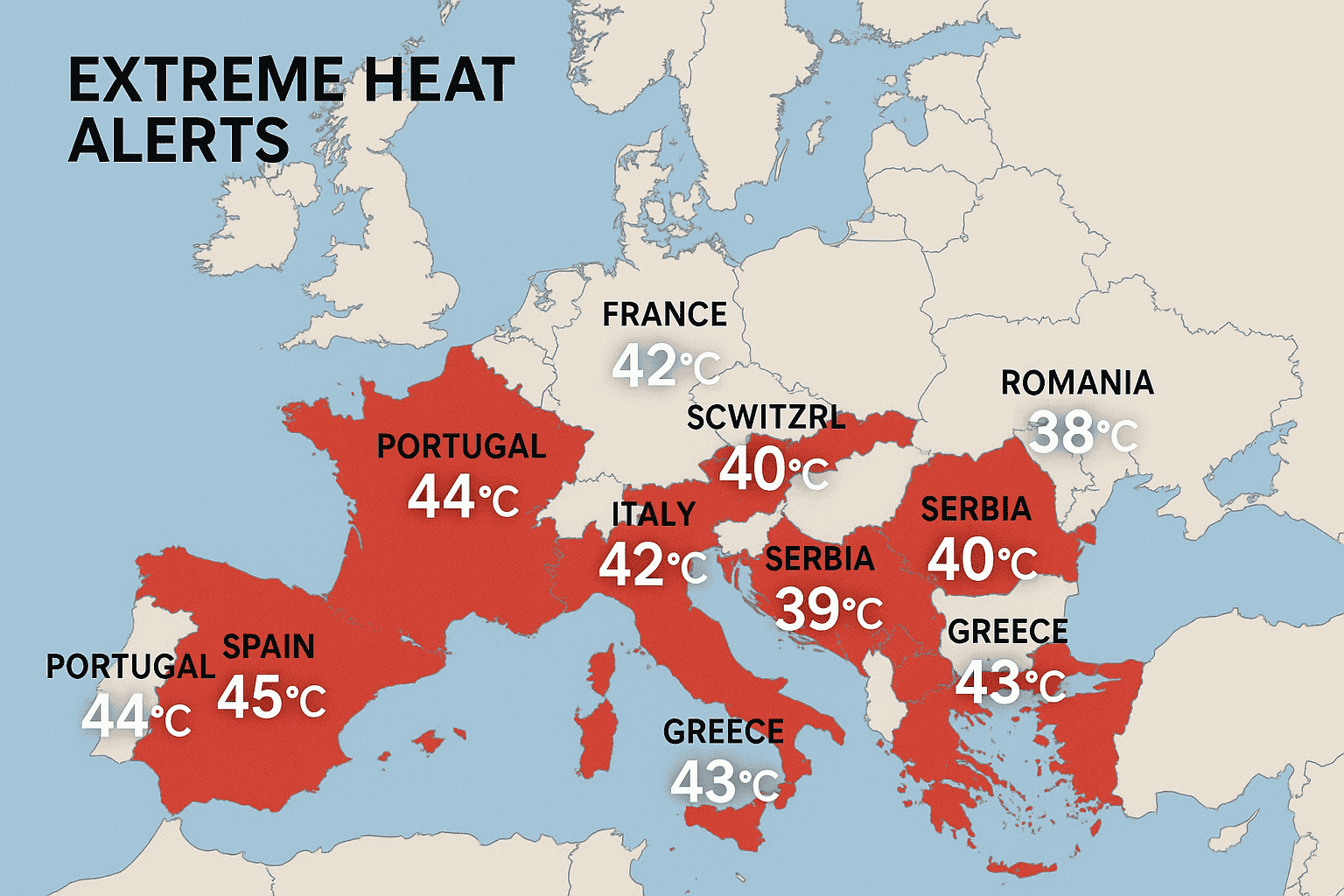
Heatwaves Across Europe: How Countries Are Responding
The European Heatwave 2025 has shattered temperature records across Europe, putting millions at risk. From Spain to Germany, authorities are scrambling to keep citizens safe as thermometers climb past 45°C in some regions. This article explores how different European nations are tackling the crisis—from emergency cooling centers to water rationing—and offers essential safety tips you can follow to protect yourself and your family. Whether you live in an affected area or are simply traveling this summer, understanding the scope and impact of this historic heatwave will help you stay informed, prepared, and resilient.
Why the European Heatwave 2025 Is Different
This year’s heatwave is among the most extreme Europe has ever faced. Climate scientists attribute it to a combination of long-term global warming and shorter-term weather drivers like a persistent high-pressure system.
Unlike past heatwaves, 2025 has seen prolonged periods of extreme temperatures with little overnight relief, increasing health risks and energy demands across several countries.

Regions Under Extreme Heat Alerts During European Heatwave 2025
High-Risk Countries and Regions:
- Spain – Andalusia, Madrid
- France – Paris, Marseille
- Italy – Rome, Sicily
- Germany – Berlin, Bavaria
Recent Statistics:
- Spain recorded 46°C in Seville.
- France issued Level 4 heat alerts in 20 departments.
- Italy enforced water rationing in 12 provinces.

Government Response to the European Heatwave 2025
Spain:
- Cooling shelters in urban centers
- Heatwave emergency SMS alerts
France:
- Water distribution to vulnerable groups
- Public health campaigns on heat safety
Italy:
- Restrictions on daytime work for outdoor laborers
- Bans on non-essential water use
Germany:
- Shade structures and temporary fountains in cities
- Medical hotlines for heatstroke emergencies


What Citizens Should Do During the European Heatwave 2025
Heatwave Safety Checklist:
- Stay indoors during peak afternoon hours
- Drink at least 2–3 liters of water daily
- Use fans and close curtains to block sunlight
- Check on elderly neighbors regularly
- Follow local advisories and helpline updates

FAQs or Common Concerns
- Q: How long will the European Heatwave 2025 last?
- A: Meteorologists expect extreme conditions through late July.
- Q: Can I travel during a heat alert?
- A: Non-essential travel should be postponed; check advisories.
- Q: What are signs of heatstroke?
- A: Dizziness, confusion, rapid heartbeat, and high body temperature.
Final Thoughts – Staying Safe as Temperatures Rise
The European Heatwave 2025 is a stark warning about climate extremes and the growing impact of global warming. As the situation continues to unfold, staying informed and prepared is essential. Hydrate regularly, check on vulnerable neighbors, and monitor trusted weather and health updates from official sources like Météo-France, AEMET, and DWD.
For deeper insights and health preparedness:
- Review heat health safety guidelines from the World Health Organization (WHO)


Disclaimer:
The information in this article is intended for general awareness and educational purposes only. While we strive to provide accurate and up-to-date content, we do not guarantee the completeness or reliability of any information presented. This article does not constitute professional advice. Always follow guidance from local authorities, official government agencies, and qualified professionals regarding heatwave safety and emergency measures. The publisher assumes no liability for actions taken based on this content.






